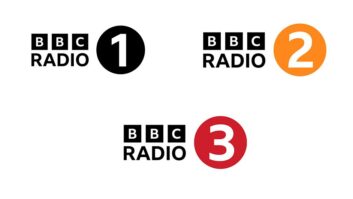New England Tower Ruling Is Viewed as a Big Win for Broadcasters
LEBANON, N.H. Broadcasters who want to erect new towers are encouraged by a court ruling in New England.
A ruling by the New Hampshire Supreme Court rejected a city zoning ordinance limiting the height of new communication towers to 42 feet. Tower industry observers say the ruling could aid broadcasters in other states facing resistance to new tower projects.
Some observers consider this a precedent-setting ruling. For the first time, they say, a state’s high court has held that, under some circumstances, the FCC’s assignment of a construction permit to serve a community pre-empts that area’s attempts to prohibit broadcast services by using what these observers consider unreasonable land use regulations.
The court rejected a local ordinance in Lebanon, N.H., in December. The court ruled that the city’s height restrictions are pre-empted by federal law – in this case the broadcast license and construction permit issued by the FCC.
“We conclude that for anyone seeking to operate a new FCC-licensed AM station in the city, compliance with both the (local) zoning ordinance and federal law is a physical impossibility,” the court stated.
“Where it is impossible to comply with both, the local law is pre-empted.”
Precedent
The case drew the attention of the Society of Broadcast Engineers, which considered the case crucial at a time when radio and television broadcasters and the wireless industry are battling for additional tower space.
The ruling clears the way for Koor Communication Inc. to re-apply for building permits to begin constructing a four-tower array to the height of 266 feet for WQTH(AM). The 50 kW station at 720 kHz is licensed to nearby Hanover.
SBE General Counsel Chris Imlay said, “The decision established that, where compliance with the terms of an FCC construction permit and compliance with land use regulations (conflict), the FCC’s authority is pre-emptive.”
Imlay said the ruling in New Hampshire could very well be instructive to courts in other states with similar circumstances.
“Now attorneys representing other broadcasters have a case to point to and say, ‘Here is what the top court in New Hampshire said about local zoning ordinances vs. federal law,'” Imlay said.
SBE filed friend-of-the-court briefs on behalf of Koor, which argued that the FCC has exclusive jurisdiction to regulate the technical aspects of broadcasting, Imlay said.
The commission regulates the minimum height of AM antennas to prevent nighttime interference with other radio stations, said Fred Hopengarten, the telecommunications lawyer who represented Koor.
“You avoid interference by having an antenna system that can guarantee the stability of the signal or pattern. You can’t do that with an antenna below the FCC’s minimum. As long as federal law is the supreme law of the land … there is an implied pre-emption over local law,” Hopengarten said.
“This was a case of implied pre-emption and the interference question is the underlying rationale, ” he said.
Fred Baumgartner, chairman of the National Antenna Consortium, an industry coalition formed to fight for the rights of broadcasters and tower owners, said the court victory should have a national impact for an industry battling the not-in-my-back-yard, or NIMBY, mindset.
“The Koor decision is an important reaffirmation of the precedence of federal regulation over a local regulation that would for all intents and purposes prohibits new broadcasters from Lebanon, N.H.
“Unfortunately, there are more communities enacting more and more restrictions making an FCC license almost worthless,” Baumgartner said.
CFA cited
Koor first filed for variances to the ordinance in 1999 seeking to construct the four towers to the height of 266 feet in accordance with its FCC license and CP. The broadcaster’s attorneys argued that Lebanon’s restrictions effectively prohibited the construction of new radio stations. The broadcaster subsequently lost several court decisions, leading to an appeal to the state’s highest court (RW, Feb. 1, 2002).
City attorneys pointed to the controversial crossed-field antenna as proof that the ordinance limiting new towers to 42 feet does not prohibit new AM towers from being built. But that antenna design lacks FCC approval and is not used in the United States.
Nearly a dozen existing towers in Lebanon exceed the height restrictions but were grandfathered in when the current zoning ordinance was implemented in 1990, according to court documents.
Bob Vinikoor, president of Koor Communication Inc., said the decision means local zoning prejudice, at least in New Hampshire, cannot preclude a broadcaster from building a broadcast tower.
“We still have the procedural process to go through” before construction can begin, Vinikoor said. “However, the city can no longer use the 42-foot maximum height as a reason to deny our permits.”
Baumgartner said the city may not be out of options.
“They could try again with another unreasonable basis for denial of Koor’s application … something arbitrary like the height restriction was,” Baumgartner said.
Vinikoor said he expected to address the Lebanon zoning board about obtaining construction permits for the project in January.
Bernard Waugh, the attorney representing the city, declined comment.
Koor Communication also owns WNTK(AM) in Newport, N.H., WNTK(FM) in New London, N.H. and WNBX(AM) in Springfield, Vt.












